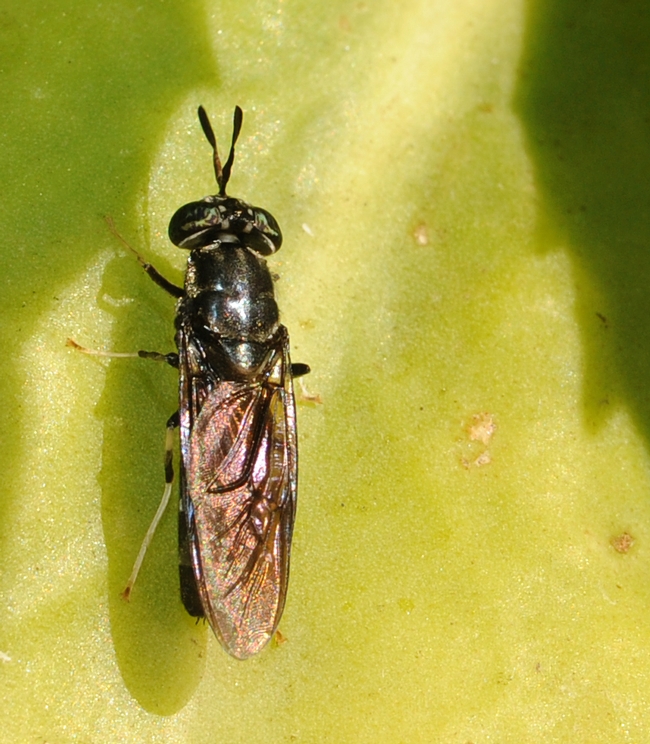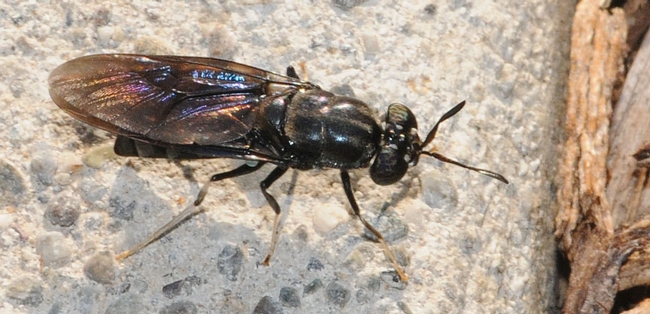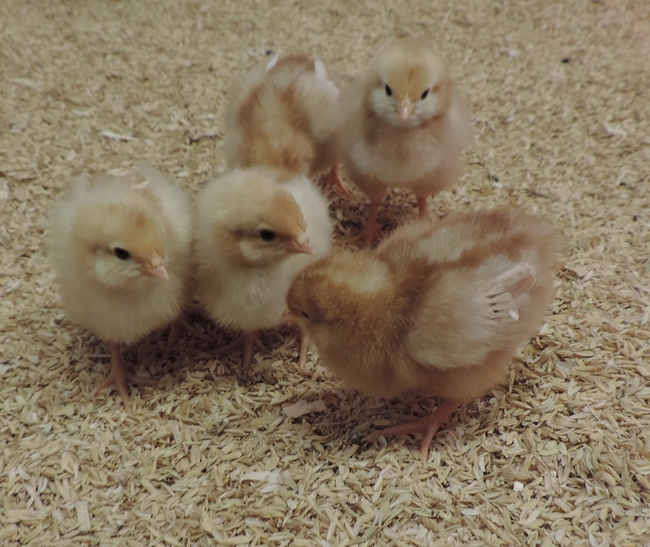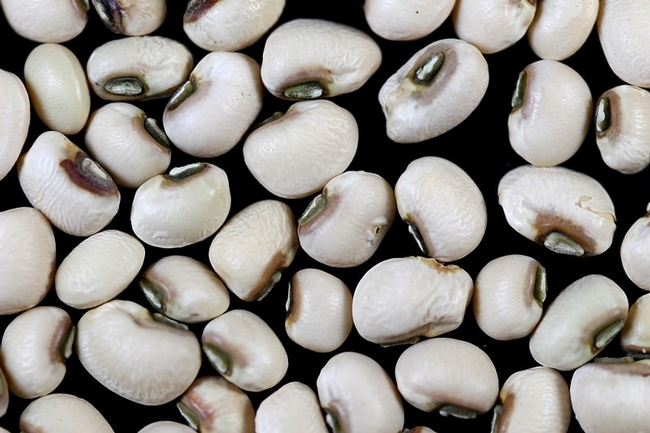Posts Tagged: black
Poultry 101 guides new parents of chicks
As Californians began sheltering in place at home, they started growing their own food. In addition to gardening, people have begun adopting chickens for fresh eggs. For people who have little to no experience raising poultry, University of California Cooperative Extension has care and feeding tips to keep the birds healthy.
UCCE dairy advisor Randi Black and Karen Giovannini, UCCE agriculture ombudsman for Sonoma County, collaborated with UCCE poultry specialist Maurice Pitesky in the School of Veterinary Medicine to create Poultry 101. Their tips for new poultry owners are free at http://ucanr.edu/poultry101.
“Raising chicks and hens can be incredibly rewarding, particularly with delicious farm fresh eggs made right in your backyard,” said Black, who is also proud backyard poultry parent. “However, like other animals, they take a lot of care and management to ensure they stay healthy and productive. With new poultry parents on the rise, providing informative and accessible resources is critical to keeping our backyard flocks thriving.”
The guide covers the needs of chickens over their lifespan, from the time they hatch through retirement.
For warmth, baby chicks huddle under their mother hen. Without a hen, new owners must provide the appropriate ambient temperature based on the age of the chick. Poultry 101's “Chick temperature chart” recommends temperatures for chicks from hatch to 6 weeks old.
At around 18 weeks of age, one can eggs-pect pullets to lay their first egg.
"Backyard poultry can be educational and fun. Using UCCE tools like 'Poultry 101' are meant to provide science-based practical resources to raise healthy poultry,” Pitesky said.
It’s the most wonderful time of the year for black-eyed peas
In some parts of the country, eating black-eyed peas on New Year’s Day is thought to bring prosperity in the New Year. UC Riverside’s Reuben E. Herrington, a culinary manager/catering chef, has delicious recipes for black-eyed peas to share:
Braised Black-Eyed Peas
1 lb black-eyed peas
4 qts water
1 qt veg stock
.5c diced yellow onions
.5c diced green pepper
1 tsp minced garlic
1 smoked turkey leg or thigh
1/3 tsp kosher salt
1/3 tsp cracked black pepper
- Soak peas overnight in cold water
- In a large pot sauté onions, peppers, garlic, until translucent
- Drain and add peas to the pot , then add the stock and water and bring to a boil
- Once boiling turn down to a simmer and add the smoked turkey
- Cover and let cook for 3 hours on a medium to low heat
- Once peas are soft add salt and pepper to taste
- Remove smoked turkey and shred the remaining meat from the turkey and add to the peas
- Serve hot with jasmine white rice or cornbread
Traditionally served as a side dish or on New Year’s Day for most southern families, with fried chicken catfish, or smothered pork chops.
Black Eyed-Pea Fritters (Accara) w/ Hot pepper sweet relish
Ingredients for fritters:
1 cup black-eyed peas, soaked overnight, the rinsed and drained
1/2 medium onion, diced
1/2 cup raw peanuts
1 tsp thyme, minced
1/4 tsp cayenne pepper
1 tbsp apple cider vinegar
1/4 cup + 2 tbsp water
Salt to taste
1 bell pepper, finely chopped
1 tbsp cornmeal
Oil for frying
- In a food processor, combine the beans, onion, peanuts, thyme, cayenne, vinegar, water and salt and puree until you have a smooth mixture.
- Transfer to a bowl, cover and refrigerate for an hour.
- Remove the batter and add the chopped bell pepper and cornmeal and beat with a wooden spoon for 2 minutes.
- In a saucepan, heat the oil to about 350 degrees. Spoon the batter into the oil, taking care not to overcrowd the pan. Fry, stirring around, until the fritters are golden-brown, about 2 minutes.
- Transfer the fritters to a paper-towel-lined plate to drain. If you’re not eating them immediately, keep them warm in an oven warmed to 200 degrees.
- Canned black-eyed peas can be used to save time.
Ingredients for hot pepper sauce:
1/4 cup extra-virgin olive oil
1 small red onion, diced
1/2 tsp cumin
1/8 tsp cayenne
Salt to taste
1 large clove garlic, minced
1 habanero chili, minced
1/4 cup tomato paste
1/4 cup tomato sauce
2 tsp apple cider vinegar
1/4 cup water
1/4 tsp freshly ground white pepper
- In a saucepan, over low heat, warm the oil. Add the onion, cumin, cayenne, and 1/2 tsp salt and saute until the onions start to caramelize, about 8 minutes.
- Stir in the garlic and chili and saute another two minutes (Make sure you have your exhaust on because this can cause some serious coughing). Add the tomato paste, tomato sauce, vinegar and water. Mix well and simmer until it starts to thicken, about 5-7 minutes.
- Transfer ingredients to a blender, add pepper if using, and puree to a smooth paste. Add more salt if desired.
Black Eyed-Pea Salad
1 lb black-eyed peas
4 qts water
1 c diced tomatoes
1 c diced red and green peppers
1 c diced red onions
1 c chopped parsley
.5 c white corn
.5 c champagne vinegar
.5 c olive oil
1/4 tsp kosher salt
1/8 tsp cracked black pepper
1/8 tsp crushed red pepper
1/3 tsp sugar
- Let peas sock in cold water over night
- The next day cook peas until tender about 1.5 hours
- Drain and let cool
- In a large bowl combine all the ingredients and toss well coating the peas thoroughly.
- Season with salt and pepper and taste to adjust if needed.
- Let sit in the refrigerator until service.
- This will go well with any type of Southern Picnic or BBQ
- Canned black-eyed peas can be used as well to save time.
The Good Soldier
If you see a black fly or its eggs and larvae while you're turning over your compost pile, don't be alarmed.
It's probably a "good soldier."
The black soldier fly (Hermetia illucens) is a beneficial insect. And a far-ranging one at that.
Martin Hauser, senior insect biosytemastist at the Plant Pest Diagnostics Branch, California Department of Food and Agriculture, says this is the only Hermetia he can find in the Sacramento region. "If you go south and to Arizona and New Mexico, you'll find more species, which are more colorful."
This New World species, he says, is now worldwide. "I found it in Nepal, Borneo, Australia, Madagascar, Ghana, France and last year it was recorded for the first time in Germany."
The black soldier fly, about 15 to 20 mm long, is primarily black, as its name indicates. The male has often a reddish abdomen while the female's abdomen is mainly black with dark black wings.
It's often mistaken for a wasp. "Hermetia illucens has that transparent white window on the first abdominal segments, which gives the optical illusion of a [not only Sphecids, but also Eumenidae etc..] wasp with a petiolated abdomen," said Hauser, who received his doctorate in entomology from the University of Illinois at Urbana-Champaign.
The adults feed on floral nectar; in fact, we spotted one on sedum last week at the Häagen-Dazs Honey Bee Haven on Bee Biology Road, UC Davis. The females lay their eggs in compost, manure and the like. And they do like!
The eggs, pale yellow or cream colored, are in masses that contain as many as 500 eggs. Some folks, when they see them in a compost pile, wonder if they're cockroach eggs.
They're not!
The larvae, aka maggots, thrive on decaying organic matter or detritus. In doing so, they make short work of rotting organic waste. They're also used as a forensic entomology tool and as pet food.
Indeed, if you've never encountered a black soldier fly, you may have encountered the larvae. They're sold in pet stores under such names as Phoenix Worms, Reptiworms and Soldier Grubs to feed herptiles (amphibians and reptiles) and tropical species of fish. They're also used as composting grubs and for chicken feed.
Here’s a great video on the black soldier fly larvae.
When used in manure management, the black soldier fly larvae are known by the acronym, BSFL.
"The larvae of this fly eat everything!" Hauser said. "They can get rid of all kinds of organic waste in no time, like mountains of orange peel from the juice industry, organic part of household garbage, and compost."
A video on YouTube shows how quickly these larvae consume dead fish.
"But the real cool thing is that you then can harvest the maggots, which are a prime source of protein," Hauser said. "...You can collect the mature maggots, and produce, for example, protein powder for the fish industry. Right now we catch a lot of small fish, grind them up and feed them to larger fish, which is a huge waste of resources, energy and protein--each trophic step loses 90 percent of the energy, which means you have to catch a lot of small fish to raise some big fish."
"But if you could feed the fish with orange peel and garbage, you would solve two problems at once - and this is where this amazing fly comes into play: it converts waste into protein. Saving the fish, getting rid of waste and being 100% organic."
So, if you think of insects as "the good, the bad and the bugly," think of the black soldier fly as "good."
The larvae are good for the compost pile, good for pet food, good for manure management and good for biogradable waste.
And as an adult, it's a pollinator!

The black soldier fly is a beneficial insect. (Photo by Kathy Keatley Garvey)

Black soldier fly heading toward a compost pile. (Photo by Kathy Keatley Garvey)



